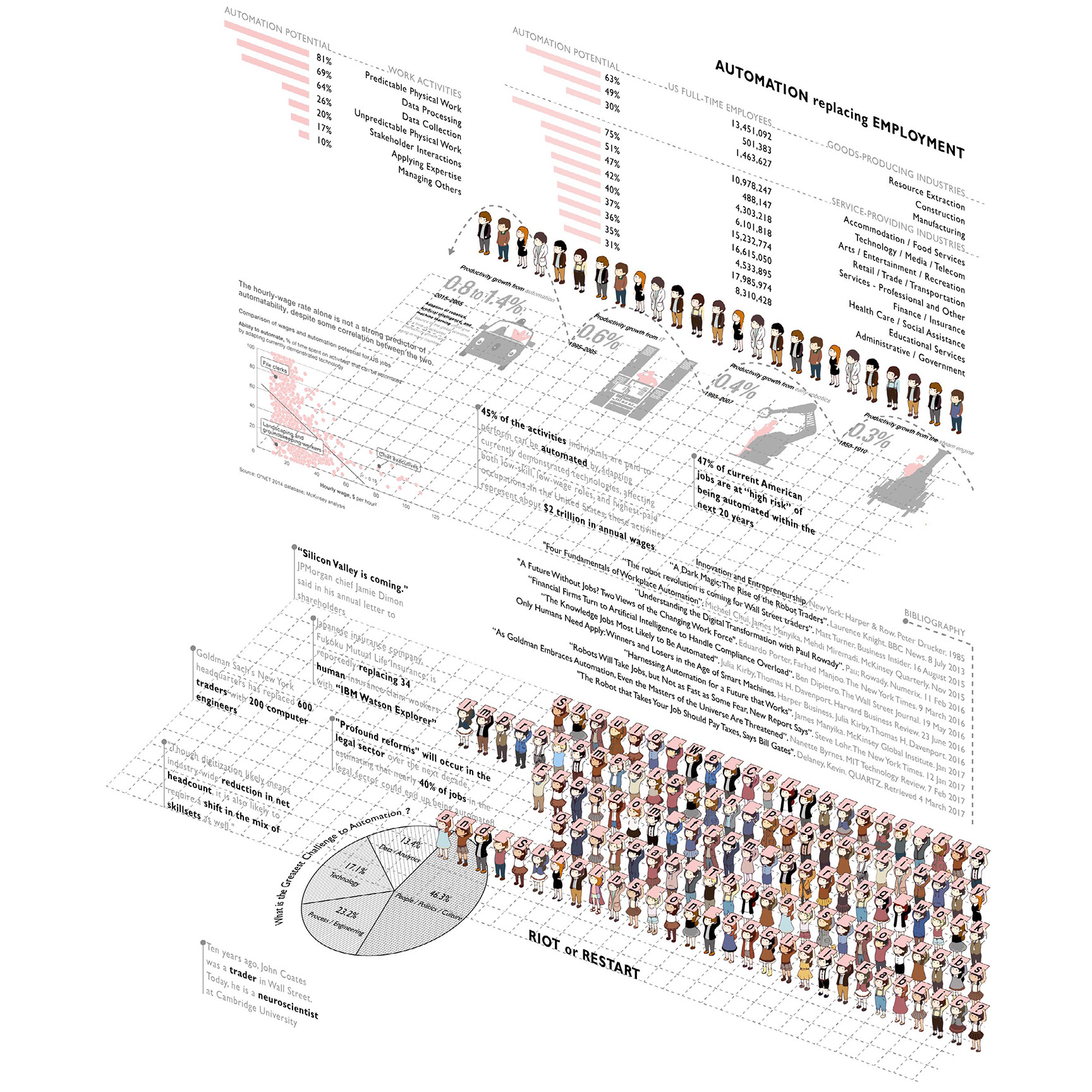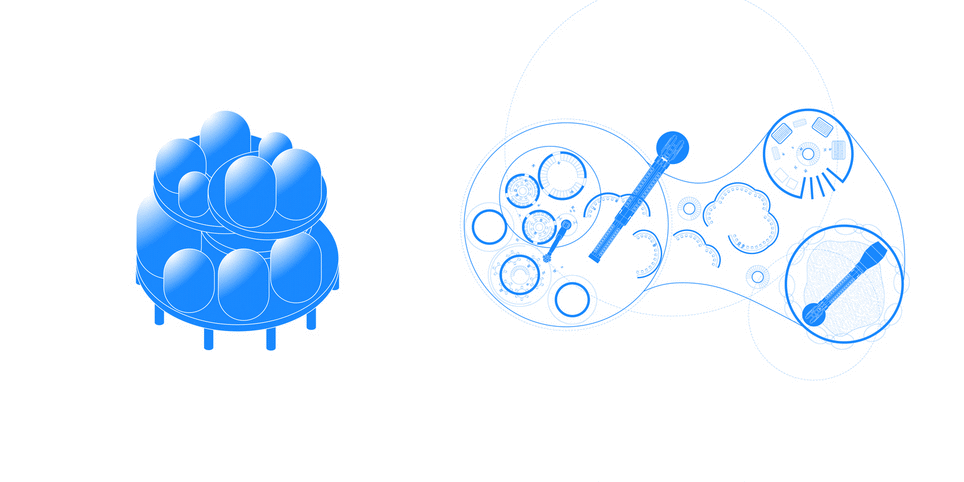


When automation takes over our jobs, should we celebrate the improvement in productivity and freedom from boring work? Or feel nervous about the threat to jobs and the strain on social fabrics?
School with No Purpose, by adopting interest-based peer education and flexible spatial programming, aims to help the growing number of people who lose their jobs to automation, to build new connections between people regardless of their previous profession, and to encourage people to harness their passion and creativity to create new jobs, businesses, and institutions for a post-automation economy.

Our generation have to realize that some jobs are never coming back. We are not losing our careers to recoverable economic crisis or to trade deals, but to automation, to the irreversible technology improvement.
In fact, every types of job has some part that can be automated. Even though it doesn’t mean we are all going to be fired overnight, but people losing job to automation is an inevitable trend. The automation ratio varies not in relation to the wages, but correlates to the types of activity performed in each job.
With that being said, regardless of people’s educational background and social stratum, white-collar worker and blue-collar would possibly lose their job to automation at the same time. Under this circumstance, one question is urgent and anxious to us: When automation takes over our jobs, should we celebrate the improvement in productivity and freedom from boring work? Or feel nervous about the threat to jobs and the strain on social fabrics?
Technology leaders have proposed some possible way of compensation: Bill Gates suggests that robot should pay tax as well, so that technology companies can bear their social responsibilities when making a tremendous profit. While Elon Musk proposes a universal wage offered by government. But how should we use these money? What can we do when there is no job for us anymore?



The ‘No Purpose’ refers that this school abandons a purpose-guided curriculum, and instead adopts the interest-based peer education as the pedagogical strategy. This technological unemployment trend brings possibility of breaking through social stratum that has been fixed for decades, and this school is designed to further mix them together physically and mentally. The high-frequency communication within this hybrid intellectual mass would spark much more creativity and passion compare to what traditional education does.
People enter this school would be arranged randomly, in the middle campus, regardless to their former profession and expertise. And according to the interests they registered, they would find themselves a member of the forum that’s most related. If their interests shift, they can switch forum as they want to, corresponding to this, the forums would dissolve and regroup over time.

How do people interact in this school?
Take the story of Charles and Joe as an example, Charles was a trade broker at Wall Street, but his job was recently replaced by computer broker. While Joe was a worker from a manufacture at the Brooklyn Navy Yard’s Sweet’N Low artificial sugar company and lost his job to hundreds of robotic arms. Charles and Joe happen to sit next to each other when they first entered the school, in the middle ground, and soon found that they share the passion for collecting life-size doll. They are complain about how vulgar and indifferent the existing dolls are, and how the silicon skin feels fake and inhumane, so they decide to experiment on new materials that simulate human skin better. Their project is named ‘True-Flesh’, while they are making progress in school labs, they also learn from expertise in chemistry, material and art that they found in the forum. They display their progress they online, not only for sharing experience, but also for crowdfunding in the future.
